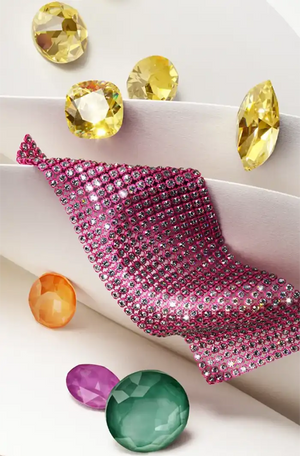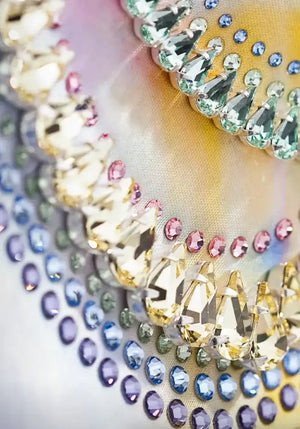
What Does 925 Mean on Jewelry?
If you've ever shopped for jewelry, you've likely encountered the mysterious '925' mark stamped on silver pieces. This mark is far from just a random number; it holds a significant meaning that guarantees the quality and purity of the metal. In this blog post, we'll explore the intriguing world of 925 jewelry markings and why, when you decide to purchase high quality jewelry findings, understanding this hallmark is crucial. Let’s take a closer look.
The Significance of '925'
Composition of Sterling Silver
The '925' marking on jewelry signifies that the piece is made of sterling silver. This means that the metal is composed of 92.5% pure silver and 7.5% other metals, typically copper. The addition of copper strengthens the silver, making it more durable and suitable for daily wear. This standard has been widely adopted because pure silver alone is too soft for most wearable items.
The History of the '925' Marking
Evolution of Standards and Regulations
Sterling silver has been a valued material for centuries, but the '925' standard is a relatively modern development. Historically, different countries had their own standards for what constituted silver, leading to inconsistency and confusion. Over time, the 925 mark became internationally recognized as a standard for sterling silver, helping to assure buyers of their jewelry's authenticity and quality.
Interpreting Different Hallmarks
- Maker's Marks: These are unique stamps placed by the creators to signify who crafted the jewelry.
- Country of Origin Stamps: These marks indicate the country where the jewelry was made.
- Additional Purity Markings: Sometimes, other numbers besides 925 are used to represent different forms of silver.
- Quality Control Stamps: These assure the buyer of passing certain quality standards.
- Date Marks: Often, a piece will include a date mark to indicate the year it was made.
Practical Tips for Jewelry Buyers
When purchasing jewelry, particularly pieces advertised as sterling silver, it is vital to be well-informed to ensure the quality and authenticity of your investment. Here are some practical tips every savvy jewelry buyer should consider:
Inspect for Hallmarks
The first step in authenticating sterling silver is to look for the '925' marking, a stamp that indicates the metal is 92.5% pure silver. This hallmark is the international standard for sterling silver, and its presence is a primary indicator of authenticity.
Look for Consistency
Assessing the quality of the hallmark itself can also provide clues about the jewelry's authenticity. A clear, consistent, and precise stamp suggests a higher level of craftsmanship and legitimacy, whereas poorly stamped marks might be red flags indicating inferior quality or counterfeit products.
Verify Authenticity
If you have doubts about a piece of jewelry, especially if it is a significant investment, consider consulting with a professional. Jewelers and appraisers can perform tests or provide evaluations to confirm the metal's purity and the authenticity of the piece.
Examine Craftsmanship
Sterling silver of good quality will exhibit excellent craftsmanship. Pay attention to the details and finishing of the jewelry. Well-crafted pieces should have smooth finishes, secure settings, and no irregularities in the metal or design that could detract from their appearance or durability.
Consider Additional Markings
Besides the '925' stamp, look for other hallmarks that can tell you more about the jewelry's origins, such as the maker's mark, country of origin, and any additional purity markings that align with other metal types used in the alloy.
Ask Questions
Finally, engaging sellers about the products they offer is not only prudent but recommended. Inquire about the source of their materials, the processes involved in creating their pieces, and the meaning behind any and all hallmarks found on their jewelry.
By adopting these practices, you can make more informed decisions and feel confident in the quality and authenticity of your sterling silver purchases.
FAQs
Can sterling silver jewelry tarnish, and how can I prevent it?
Yes, sterling silver can tarnish when exposed to air and moisture, which may cause the metal to darken or discolor. To prevent this, store your jewelry in a dry, airtight container or a tarnish-resistant pouch. Regular cleaning with a soft cloth and silver polish can also help maintain its original luster.
How do I differentiate between sterling silver and silver-plated jewelry?
Sterling silver pieces are marked with '925' or other similar hallmarks, indicating they are made primarily of silver. Silver-plated items, however, consist of a different base metal coated with a thin layer of silver and typically do not bear the '925' stamp. These plated items may also wear down more quickly than solid sterling pieces.
Is sterling silver suitable for sensitive skin?
Sterling silver is generally a great choice for sensitive skin due to its hypoallergenic properties. It rarely causes allergic reactions, making it suitable for people who are sensitive to other metals. However, to ensure compatibility, verify that your jewelry is truly made of 925 sterling silver, as other metals in the alloy might still cause sensitivity in very rare cases.








